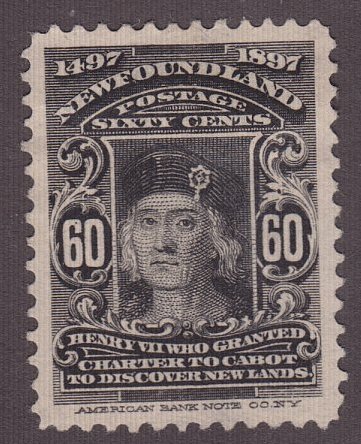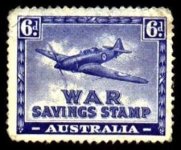- What is stamp identification - or - what is this FAQ all about?
- Where do I find the information I need to indentify stamps?
- What is a catalogue number?
- Why can't I find my stamp in the catalogue?
- What do I do if I can't read the country name?
- I found my stamp, but the catalogue lists several varieties and I can't understand the difference; where can I find more information?
- What are some common types of paper used in stamp production and how do I tell them apart?
- What are some common printing methods used in stamp production and how do I tell them apart?
- The catalogues list all kinds of colors and shades, some that I've never even heard of, and some that sound very similar to one another. How can I know if I'm choosing the correct color?
- What is a watermark and how do I find it?
- What do the perforation numbers in the catalogue mean?
- What are secret marks?
- What is tagging?
- What do I do if I need help with stamp identification?
What is stamp identification - or - what is this FAQ all about?
Stamp identification is the practice of examining a stamp and establishing certain facts about its history, such as the country of origin and the time period in which the stamp was in use. In addition to the stamp design, collectors often distinguish stamps based on the type of paper used, watermarks in the paper, color shades, and a host of other variations. There are many situations in which two stamps which appear at first to be identical are considered to be different by collectors. Sometimes looking more carefully is all that's required to distinguish among stamp variations; other times special equipment is brought into play. These topics and more are covered further in this FAQ.
Top
Where do I find the information I need to indentify stamps?
You need a stamp catalogue. (Hint: They can be expensive but most libraries keep them on hand.) There are numerous stamp catalogues published around the world which contain pictures of stamps and various details to help in identification. Michel, Gibbons, Yvert, and Scott are all examples of large catalogue publishers that make a pretty good effort at covering the general stamps of the world.
Top
What is a catalogue number?
By convention, stamp catalogues assign a unique number to each stamp they identify. These numbers are not only useful for organizing your collection, but they also provide a convenient shorthand for stamp collectors and dealers to use in referring to stamps. Unfortunately the numbering systems of the catalogue publishers are not identical. You need to specify which catalogue you are using when referencing a catalogue number (for example Scott #236) - especially if you are dealing with people in countries different from your own.
Top
Why can't I find my stamp in the catalogue?
There are a number of common reasons that you may have difficulty finding your stamp.
- Your stamp might not be pictured. Unless you are using a highly specialized catalogue for your area, do not expect that all stamps listed in the catalog will be illustrated. Typically only a representative stamp from a series or set is pictured and you might not immediately recognize that your stamp belongs to the same series as the stamp shown. Take your time and look for design elements that stamps in a series or set frequently have in common, such as frames and typefaces.
- You might be looking for the wrong country name. If you can't find the country name in alphabetical order, check the index. Country names and boundaries have changed over time. For example, until 1939 the country currently known as Thailand was called Siam. Stamps inscribed Siam will therefore be found under Thailand in the catalogue. As another example, Prussia, Saxony, Bavaria, Hamburg, and a number of other former stamp issuing entities are all listed in the catalogue under German States. (Note: These examples are from the Scott Catalogue - if they are incorrect in your country please let me know!)
- Your stamp might not be a postage stamp. In addition to the "prepayment of postage," governments have used stamps in the process of collecting all manner of fees and taxes. These other stamps are called revenue or fiscal stamps and often are not listed in general stamp catalogues.
- Your stamp might not be a stamp. There have been many items that look like stamps privately produced over the years. These are often referred to as "Cinderellas" or "stamp-like labels." They are produced for charity, publicity, souvenirs, and just for fun. Again these stamps are typically not listed in general stamp collecting catalogues.
Top
What do I do if I can't read the country name?
If the country name is inscribed using "non-Latin" characters (such as Cyrillic, or Chinese) than you need what is called a visual identifier or sometimes simply an identifier. Identifiers can often be found in the stamp catalogues themselves (look in the very front or the back near the index) or they are available as standalone pamphlets or books.
Here is a pretty good identifier available online: Stamp Master Album Foreign Stamp Identifier
Top
I found my stamp, but the catalogue lists several varieties and I can't understand the difference; where can I find more information?
For trickier stamps and more advanced identification issues, you may find that the general catalogues don't provide enough information to make a good ID. Fortunately stamp collectors are notoriously prolific writers. They publish their research in general stamp collecting publications, the journals of specialist societies, and there are even entire books dedicated to advanced stamp collecting topics. (Hint: Join the American Philatelic Society and you will have access to American Philatelic Research Library.)
Top
What are some common types of paper used in stamp production and how do I tell them apart?
The two most commonly used paper types in stamp production are wove and laid. Laid paper when held to a light shows parallel lines running either vertically or horizontally. Wove paper is smooth and uniform.
Some additional paper types you might encounter include:
- Batonne: Similar to laid except the lines are further apart.
- Pelure: Thin and semitransparent. Often bluish or grayish.
- Silk: Silk fibers are visible in the paper.
- Granite: Similar to silk except the fibers are smaller.
Top
What are some common printing methods used in stamp production and how do I tell them apart?
- Engraving: A printing process that uses an etched or engraved plate. When stamps are printed via an engraved process the ink lies on top of the paper - this can be seen using a medium power magnifier.
- Typography: When stamps are typographed the image on the plate is raised rather than recessed. The result is the opposite of engraved printing and the ink is pressed into the paper (think typewriter) - again typography can be identified using a magnifying glass.
- Lithography: Lithography is a printing process in which the image to be printed is rendered with a design area that is ink-receptive while the other areas are treated to repel ink - unlike engraved and typographed stamps these images are flat. Early lithographed stamps tended to be of poor quality and lacked detail. Modern lithograph methods can produce very intricate, colorful designs. Nearly all modern pictorials are produced with offset lithography. However on close examination you will see that they still lack the fine detail of engraving.
Top
The catalogues list all kinds of colors and shades, some that I've never even heard of, and some that sound very similar to one another. How can I know if I'm choosing the correct color?
Unfortunately there is no easy answer to the color question. Collector supply outfits frequently carry color charts that can be helpful in matching stamp colors to descriptions in the catalogue. However, one of the best ways to identify color is to compare stamps to known examples from the same country. For example, if the two cent stamp from 1923 was issued only in carmine, but the two cent stamp from 1928 was issued in both rose and carmine, then if you have a 1923 stamp it can be used as a guide to distinguishing the 1928 varieties.
Top
What is a watermark and how do I find it?
Watermarks are made during the paper manufacture process by impressing an image into the paper. Where the image is impressed, the paper is thinner, and the image can be seen by holding the paper up to a light (or setting it against a dark background, or getting it wet). While some watermarks are readily found with no special effort, others can be very difficult to find - the techniques require practice and patience! The most tried and true method of watermark detection is to place the stamp face down in a specially manufactured black plastic tray, and place a few drops of “watermark fluid” on the stamp. The fluid evaporates very quickly and since it doesn't contain any water does not harm either used or mint stamps.
Top
What do the perforation numbers in the catalogue mean?
Perforations are the holes along the stamp's edge used to help separate stamps from one another. They are measured by counting the number of holes in 2 centimeters - therefore a stamp that is "Perf 11" has 11 holes every two centimeters. Various gauges are available to measure perforations. They are easy to use. You simply find the marks on the gauge which line up with the holes on the stamp. Sometimes the perforation count of a stamp is different horizontally and vertically - in this case the horizontal measure is given first - as in "Perf 11 X 10."
Top
What are secret marks?
Secret marks are intentional stamp design changes inserted by the printer. The marks are generally subtle, but usually visible either with the naked eye or a low powered magnifier. Secret marks provide a quick way of distinguishing stamp printings and have been used historically in situations when multiple printing companies produced otherwise identical stamps.
Top
What is tagging?
Tagged stamps have markings on them made with coatings and inks that are not visible to the naked eye. Tagging helps in the automation of postal sorting and stamp canceling. These markings can be bars, blocks, designs, or even cover the entire stamp. To study tagging requires an ultraviolet (UV) light, but be careful and read the instructions as UV can be harmful.
Top
What do I do if I need help with stamp identification?
Stamporama members can get help in identifying stamps by posting questions at the discussion forum. There is a special section titled "Can you help identify this?" and you can even post a picture. (Hint: Join Stamporama today!)
Top


